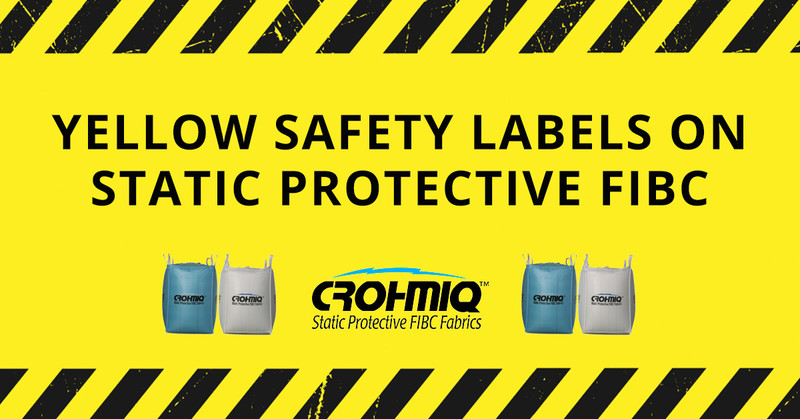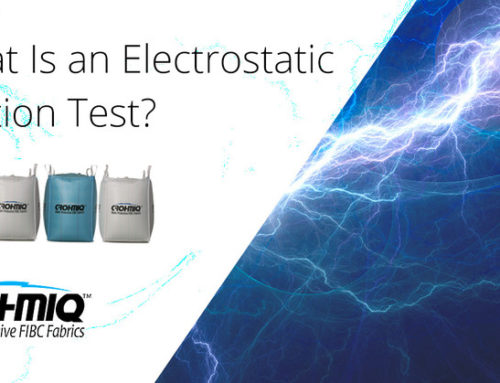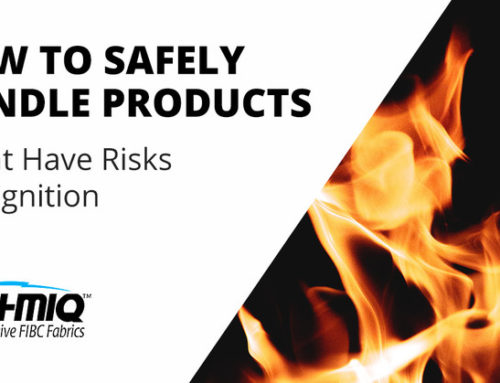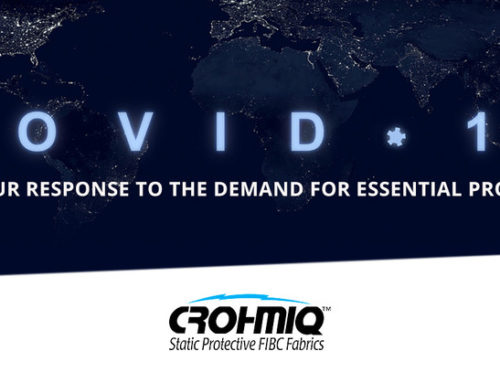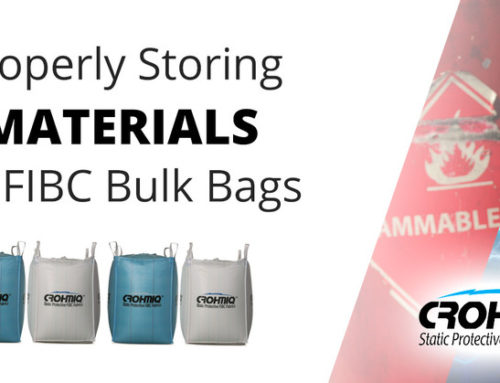Since the publication of the International Standard IEC 61340-4-4 in 2005, all static protective FIBC bags (bulk bags) claiming compliance with the standard have been required to be clearly labelled with essential safety information. Guidance on where the FIBC can be safely used and precautions to be taken in use are essential elements of the labels. The information is primarily intended for end users to ensure their safety whilst using bulk bags.
Prior to the publication of IEC 61340-4-4, there was no standard way in which manufacturers labelled static protective FIBC. Some manufacturers did not provide safety labels at all, whilst others provided data that was specific to their own products and not necessarily relevant to the end use environment. The information that is now required to be included on safety labels corresponds to the terminology and parameters that are known and understandable by end users operating in hazardous areas.
A second edition of IEC 61340-4-4 was published in 2012, which introduced the Type A, Type B, Type C and Type D FIBC classification system and required safety labels to have yellow backgrounds so they can be more easily distinguished from other labels attached to bulk bags. The current third edition of IEC 61340-4-4 was published in 2018 and continued to refine the information required on safety labels.
Let us know explore the essential elements of the yellow safety label required by IEC 61340-4-4:2018 in detail. Below is a copy of the yellow safety label for CROHMIQ® Static Protective Type D FIBC:
The first essential element clearly tells the end user that the FIBC meets all the safety requirements specified in IEC 61340-4-4.
Only bulk bags that have been tested and proven to meet all the safety requirements of IEC 61340-4-4 can legally be labelled with reference to the standard. The shield symbol is internationally recognized as meaning a product that provides protection against specific hazards, in this case static electricity as indicated by the lightning flash. The type of static protective FIBC is indicated, in this case Type D.
The next element is a statement about the earthing requirements.
In this case, as CROHMIQ bulk bags are Type D FIBC, they provide full static protection without the need for earthing. Note that in IEC terminology “earthing” is used, but this means exactly the same as “grounding”. For Type C FIBC, where earthing/grounding is essential to ensure safety this, statement is replaced by “FIBC shall be properly earthed according to manufacturer’s instructions”.
The three bullet points tell the end user where the bulk bag is safe for use and what cautions must be observed.
The first bullet uses terminology that is familiar to any company operating in hazardous areas classified in IEC-Ex and ATEX Directives. Dust zones 21 and 22 are hazardous areas where potentially explosive atmospheres created by combustible or flammable powders can be expected or not ruled out during normal operations. Gas zones 1 and 2 are hazardous areas where potentially explosive atmospheres created by gases or solvent vapours can be expected or not ruled out during normal operations. In USA, NFPA guidance uses similar concepts but slightly different terminology. Zones 21 and 22 are equivalent to Class II Divisions 1 and 2, and Zones 1 and 2 are equivalent to Class I Divisions 1 and 2. The explosion groups, MIE (minimum ignition energy) and charging current limits tells the user the safety limits that the bulk bag has been tested and qualified to. CROHMIQ bulk bags are regularly tested for breakdown voltage and ignition testing according to the requirements for Type D FIBC specified in IEC 61340-4-4 and are qualified for use in hazardous areas containing potentially explosive dust, gas and solvent vapour atmospheres.
The second bullet advises the end user of things that might affect the electrical properties, and thereby reduce static protection. This information is required on the safety labels for all types of FIBC. One of the key design principles of CROHMIQ Type D FIBC fabrics is that the technology must be resilient and provide full static protection through normal use, reconditioning and re-use. Nevertheless, this warning is useful to remind end users to look out for very heavy contamination or severe damage.
The third bullet must also be included on the yellow safety label for all types of FIBC and reminds end users that even if a static protective bulk bag is used, there are other sources of electrostatic hazard that must be addressed, specifically the need to avoid isolated conductors by proper earthing/grounding of people, metal tools and equipment, etc.
The statement at the bottom of the yellow safety label for CROHMIQ Type D FIBC, is not strictly required by the IEC standard, but does remind end users that proper risk assessment should be carried for bulk bags and other elements used in hazardous areas. For example, end users should check that the MIE of the materials within their operations are within the limits to which the bulk bags have been tested.

